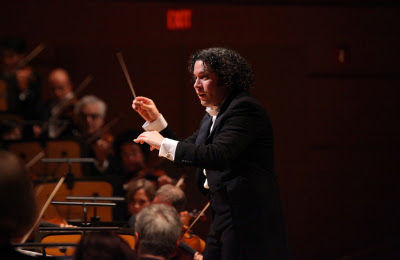By Donna Perlmutter
An illustrious opening of a Beverly Hills performing arts complex, the Annenberg Wallis. A nod to cultural icon Martha Graham. Also to Giuseppe Verdi, with his delectable last opera, “Falstaff.” What else could we say but huzzahs all around?
As the Wallis’s first offering, there was the Graham company -- which has not toured L.A. since 2000. Too long. After all, it was marvelous Martha who put modern dance on the map, starting in the 1930s and defining it as the most exhilaratingly theatrical art form to probe the human psyche.
And surely there could be no better welcome back to this city than a bid to inaugurate the Wallis -- a 500-seat theater set in a landmark: the restored, lavishly marbled Beverly Hills post office, a rendition of Italian Renaissance. She would have loved it. Especially the spacious stage with ample wing space and terrific sight lines afforded by the raked rows of seating.
But with Graham long gone -- she died in ’91, running her company and even appearing onstage right up to the end at 96! -- it’s good to see that the current dancers are equal to the same stunningly high level as those in today’s top troupes.
What’s more, the bill of fare just seen on the Wallis stage gave its audience a deliciously full spectrum of Graham’s historical importance -- from the Denishawn days of exotica and floating gossamer, on to that period when modern dance wrapped itself around political-moral issues.
The program -- planned and narrated by company stalwart, director Janet Eilber, formerly one of Graham’s major dancers -- made its mark throughout.
Once again we could think of Käthe Kollwitz’s expressionist woodcuts when Katherine Crockett performed “Lamentation,” Graham’s famous 1930 solo -- sitting on a bench and shrouded in silk jersey, her arms and legs twisting and stretching that garment into angled folds of grief, her hollowed out facial features gripped with feeling, speaking the unspeakable.
Similar angst characterized “Chronicle,” an outcry against war, with group dances that were riveting in their sense of defiance and their uniquely austere formations.
But it was “Maple Leaf Rag” -- a cleverly jokey poke at Graham herself, via emblematic quotes from her own movement vocabulary -- that sent the crowd home happy. For some others, though, the grandiloquent and overly glitzy “Ritual to the Sun,” set to Carl Nielsen’s “Helios” Overture, looked like someone’s misbegotten gloss on the choreographer’s signature.
Originality returned the next night, though, with LA Opera’s new production of “Falstaff,” the Verdian romp that exults in briskly buoyant, multi-part vocal lines and prismatic orchestration so full of fine glitter it fairly lifts off to the sky.
A connoisseur piece by any measure, it serves to celebrate the composer’s 200th birthday. What’s more, it turns the tables on those who regard Verdi -- exclusively -- as the emperor of Italian opera’s deep-felt tragedies like “Traviata” and “Rigoletto.”
This one is a comedy. Verdi and his librettist Boito created their Boccaccian delight as an odd little treatise on pre-Renaissance morality (courtesy of the Bard’s “Merry Wives of Windsor” and “Henry IV”). It’s built around a fallen aristocrat with delusions of importance but with philosophical/psychological underpinnings.
We think back to 1982 when the great god-like maestro Carlo Maria Giulini led the LA Philharmonic in a wholly high-value production with an all-star cast and how, whenever LA Opera revives it, thoughts turn to those performances.
Happily, there were no disappointments or even oddities or directorial revisions this time. And while conductor James Conlon may not have lingered over the lyric heavenliness of its short-lived melodic strains he certainly let them soar and gave great propulsive vitality to the bustling activity captured in the score.
Adrian Linford’s traditional designs made for easy access. And director Lee Blakely kept the stage action lively, possibly losing some of the lesser roles’ character definition.
But the main order of business comes down to Sir John Falstaff, and in his portrayal of the fat knight Roberto Frontali made a superb case. First off, his baritone has a full range of tone and expressive color, and you hear the singing line in all of his musical phrases. He even gave off hints of an Italian Renaissance Zero Mostel as an adorable dumpling dressed to the nines for his courting caper -- although not issuing utmost cranky wisdom in the “honor” monologue.
The other standout was Ronnita Nicole Miller as Mistress Quickly, the schemer who leads him to his comic disaster: a dump in the River Thames. Ekaterina Sadovnikova sang prettily as Nanetta, but without making us forget the alluring voice of Barbara Hendricks (who could?), while Juan Francisco Gatell was a quite wiry-sounding Fenton.
Performances through Dec. 1 at the Dorothy Chandler Pavilion.






